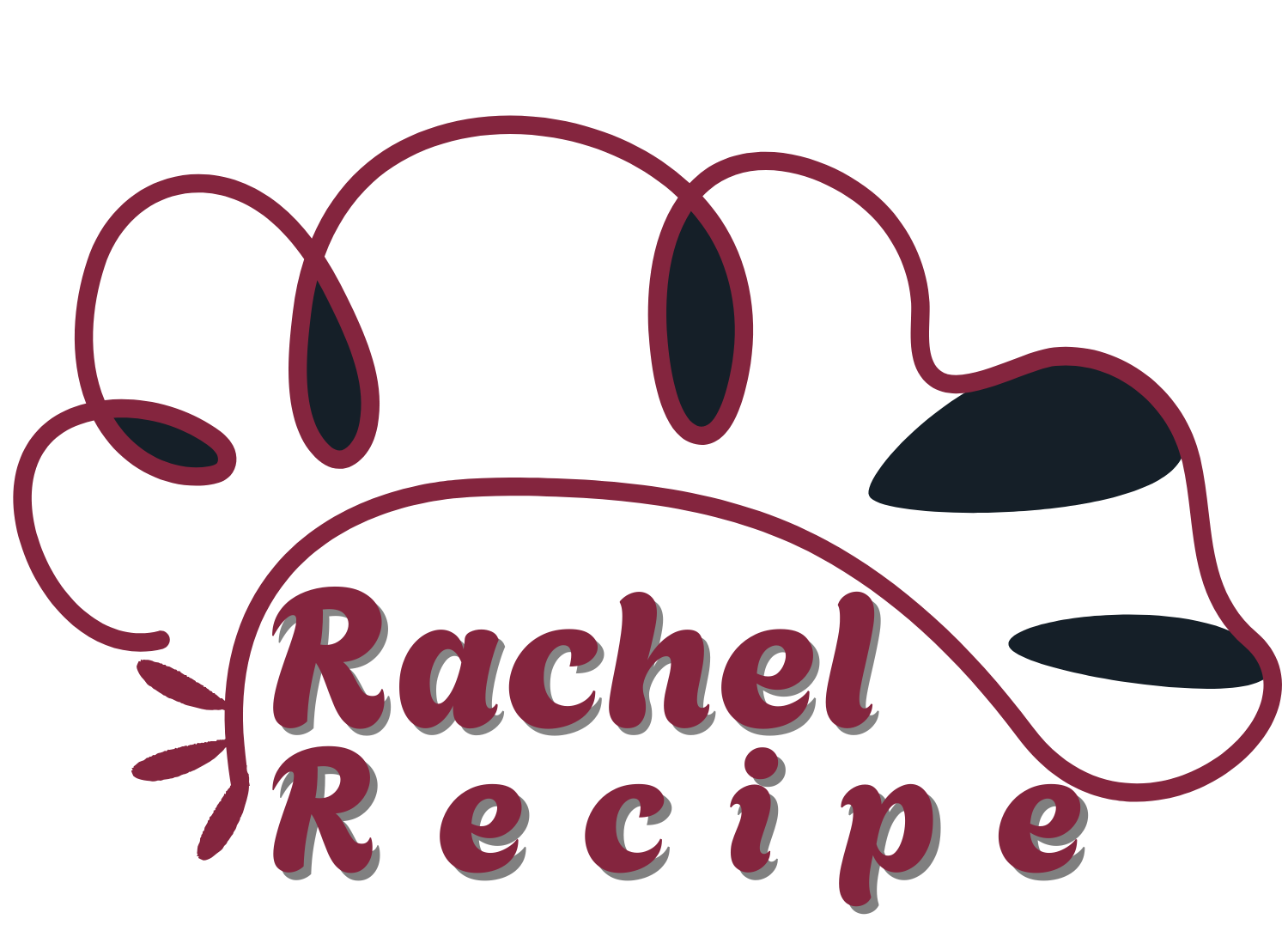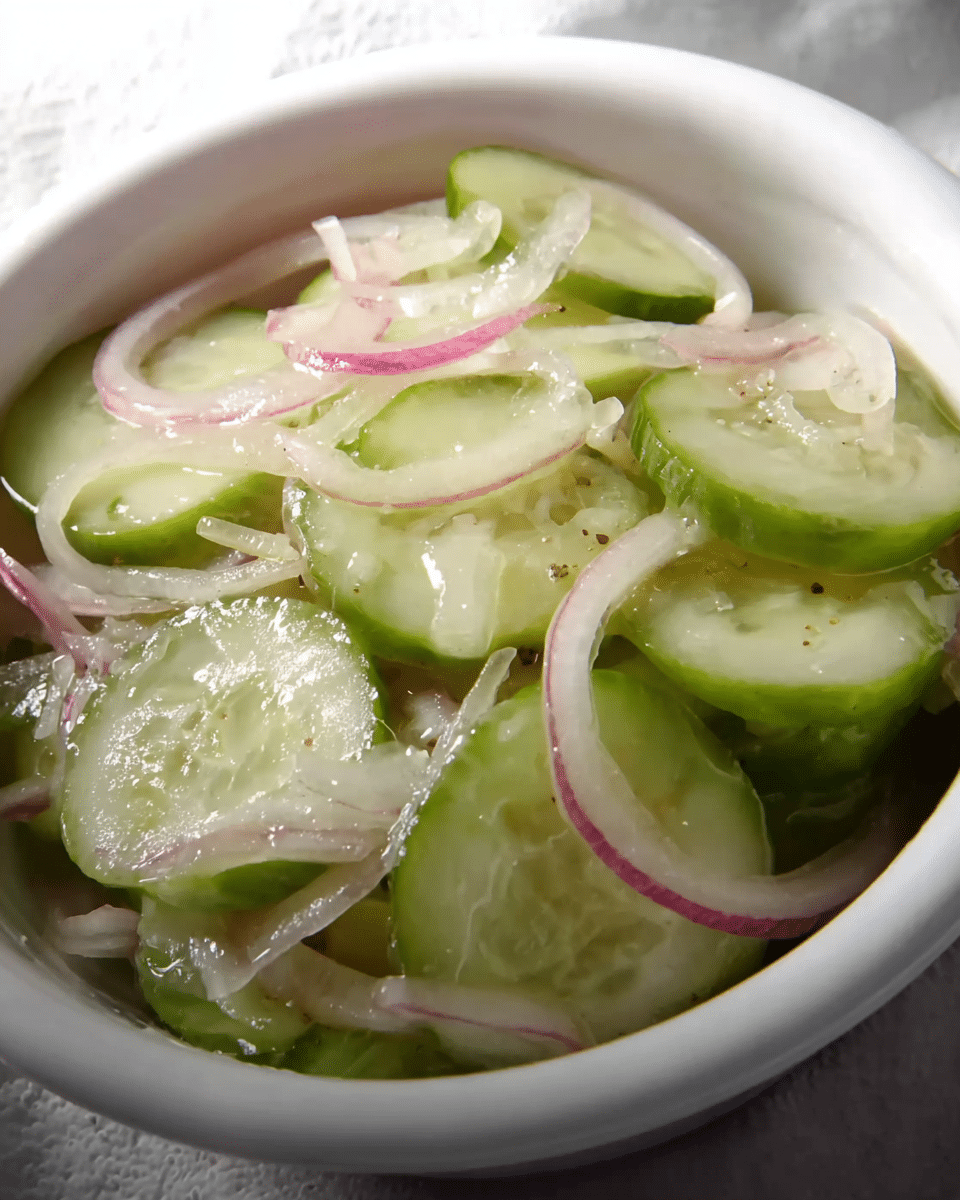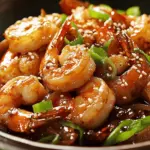This delightful Dutch cucumber salad is a crisp, tangy treat that’s refreshingly simple to make. Sliced cucumbers and onions are marinated in sweetened vinegar for a side dish that’s vibrant and cool. It’s an ideal make-ahead dish that improves with time as the flavors mingle and mellow.
Perfect for hot days or hearty meals needing a refreshing contrast, this salad is rooted in traditional Dutch cooking yet reminiscent of Japanese sunomono. It’s beloved for its minimal ingredients, ease of preparation, and bold sweet-sour flavor. Whether served at a picnic, potluck, or casual family dinner, this dish brings a nostalgic comfort that never goes out of style.
Full Recipe:
-
2–3 large cucumbers
-
8–10 oz white vinegar (Japanese seasoned sushi vinegar can also be used)
-
3–5 tablespoons sugar
-
1–2 thinly sliced onions
Directions:
-
Wash and peel the cucumbers.
-
Slice cucumbers and onions into very thin rounds.
-
Place in a mixing bowl and cover completely with vinegar.
-
Add 3–5 heaping tablespoons of sugar and stir until well combined.
-
Cover and refrigerate for at least a few hours, preferably overnight for deeper flavor.
-
For best results, allow the salad to mellow for 2–3 days in the fridge, stored in a sealed jar. Flip the jar upside down one day, then right side up the next.
-
Serve cold as a crisp, tangy side dish.
Servings: 8–10
Origins of Dutch Cucumber Salad
Dutch Cucumber Salad, known in the Netherlands as komkommersalade, is a refreshing, vinegar-based side dish that has stood the test of time. Its simplicity and vibrant flavor have made it a staple in both Dutch homes and traditional European cuisine. Though it may remind many people of Japanese sunomono or American cucumber and onion salads, the Dutch version has its own unique charm—typically relying on white vinegar or seasoned rice vinegar and a balanced addition of sugar for a subtle sweet-sour profile.
Historically, this salad was not only valued for its flavor but also for its practicality. Before the age of refrigeration, preserving vegetables in vinegar was a common practice. Dutch families could stretch their garden harvests longer by preparing salads like this one. Over time, what started as a preservation method evolved into a culinary tradition.
Cultural Significance in Dutch Cuisine
In the Netherlands, meals often focus on balance—between richness and freshness, between hearty and light. Dutch Cucumber Salad plays a crucial role in maintaining that balance. Often served alongside heavier fare such as stews, meatballs (gehaktballen), or potatoes, the acidity and crispness of the salad cleanse the palate and provide contrast.
It’s common to find this dish on the table during the summer months, when cucumbers are in season and readily available from local markets or home gardens. Its cooling effect is not just metaphorical; cucumbers have high water content and natural anti-inflammatory properties, making them perfect for warm-weather meals.
A Dish of Many Influences
Interestingly, the Dutch Cucumber Salad bears a strong resemblance to cucumber salads from other parts of the world. Japanese sunomono, Thai cucumber relish (ajaat), and Eastern European vinegar cucumbers all share similar preparation methods. What sets the Dutch version apart is its restrained sweetness and emphasis on simplicity. There’s rarely a need for sesame, chili, or herbs—the flavors speak for themselves through minimal, fresh ingredients.
This similarity to other international salads opens up interesting culinary conversations. Did the Dutch bring this preparation method with them on their seafaring expeditions? Or did they adopt it from other cultures they encountered? While the answer may be lost to history, the salad stands today as a global comfort food with distinctly Dutch roots.
The Science of Sweet and Sour
Part of the appeal of Dutch Cucumber Salad lies in its balance of sweet and sour, known in culinary terms as “sweet acid balance.” Vinegar, with its sharp acidity, contrasts beautifully with the subtle sweetness of sugar. This balance makes the salad incredibly appetizing, stimulating the salivary glands and preparing the palate for richer dishes that might follow.
Acidity also plays a role in food safety and preservation. Vinegar lowers the pH of the cucumbers and onions, helping inhibit the growth of harmful bacteria. This allows the salad to last several days in the refrigerator, developing flavor over time.
Tips for Serving and Pairing
This salad pairs exceptionally well with main dishes that are rich, fatty, or warm. Traditional Dutch meals like smoked sausages (rookworst), fried fish, and creamy mashed potatoes all benefit from a crisp and tangy counterbalance. It’s also a great accompaniment to modern meals like grilled chicken, burgers, or tofu bowls.
For added visual appeal and flavor, consider serving the salad in clear glass bowls or mason jars. This shows off the translucence of the onions and the vibrant green of the cucumbers. A sprinkle of fresh dill or chives can add a gourmet touch, though this is optional and not traditionally Dutch.
The salad is also a hit at potlucks and summer picnics because it travels well, holds up in warm weather, and doesn’t require reheating. Its flavor improves after a day or two, making it ideal for meal prep and advanced planning.
Variations Across Regions and Families
Though the base recipe remains consistent, variations are common from region to region and even from one household to another. Some cooks prefer to use Japanese sushi vinegar, which is pre-seasoned with sugar and salt, giving the salad a milder, more nuanced acidity. Others stick to plain white vinegar and manually adjust the sweetness to taste.
The addition of thinly sliced red onions instead of white ones introduces a touch of color and a milder bite. Some families add a splash of olive oil for a more rounded mouthfeel, while others include thin slices of carrot or radish for crunch and color.
Younger generations might even add chili flakes or crushed garlic for a modern twist. While these changes are not traditional, they show how flexible and forgiving this recipe can be.
Nutrition and Health Benefits
From a nutritional standpoint, Dutch Cucumber Salad is light, hydrating, and low in calories. Cucumbers are composed of about 95% water, making them one of the most hydrating vegetables available. They also contain important nutrients like vitamin K, potassium, and magnesium.
The onions add fiber, antioxidants, and anti-inflammatory compounds, especially quercetin. Vinegar is known for aiding digestion and regulating blood sugar levels. While the sugar content may raise some eyebrows, it’s generally used sparingly and can be adjusted or substituted with alternatives like honey or stevia.
For those following vegetarian, gluten-free, or low-carb diets, this dish fits in seamlessly. It’s also naturally dairy-free and vegan, which makes it suitable for a wide range of dietary preferences.
Why It’s Still Relevant Today
In a world where complex recipes and exotic ingredients dominate social media feeds, the enduring popularity of Dutch Cucumber Salad reminds us that sometimes, less is more. The dish’s minimal ingredients, straightforward preparation, and incredible flavor make it a go-to for home cooks of all skill levels.
As food trends continue to shift toward sustainability and minimalism, this traditional recipe is finding new life. Its ability to turn basic pantry staples into something fresh and exciting aligns with the growing movement toward mindful eating and waste reduction.
Preservation and Storage Tips
This salad is best when it’s allowed to sit in the refrigerator overnight, sealed in a jar or covered container. Interestingly, traditional Dutch cooks recommend flipping the jar upside down on the second day and then turning it upright again on the third. This ensures even distribution of the marinade and deepens the flavors as the vegetables continue to absorb the vinegar.
Stored properly, the salad can last up to five days. The cucumbers may lose some crunch over time but will gain in flavor intensity, often described as “bright,” “zingy,” or “lip-smacking.”
Conclusion
Dutch Cucumber Salad is more than just a side dish—it’s a celebration of simplicity, tradition, and the ingenuity of home cooking. With only a handful of ingredients and a bit of patience, this salad delivers crisp texture, tangy flavor, and cultural depth.
Whether you’re exploring Dutch cuisine for the first time or looking to bring a taste of nostalgia to your table, this salad is an easy win. It invites customization, pairs well with nearly any meal, and continues to prove that great food doesn’t have to be complicated. From Dutch grandmothers to modern meal preppers, this recipe remains a favorite for good reason.
In embracing Dutch Cucumber Salad, you’re not just enjoying a dish—you’re preserving a slice of culinary heritage that’s as relevant and refreshing today as it was generations ago.






